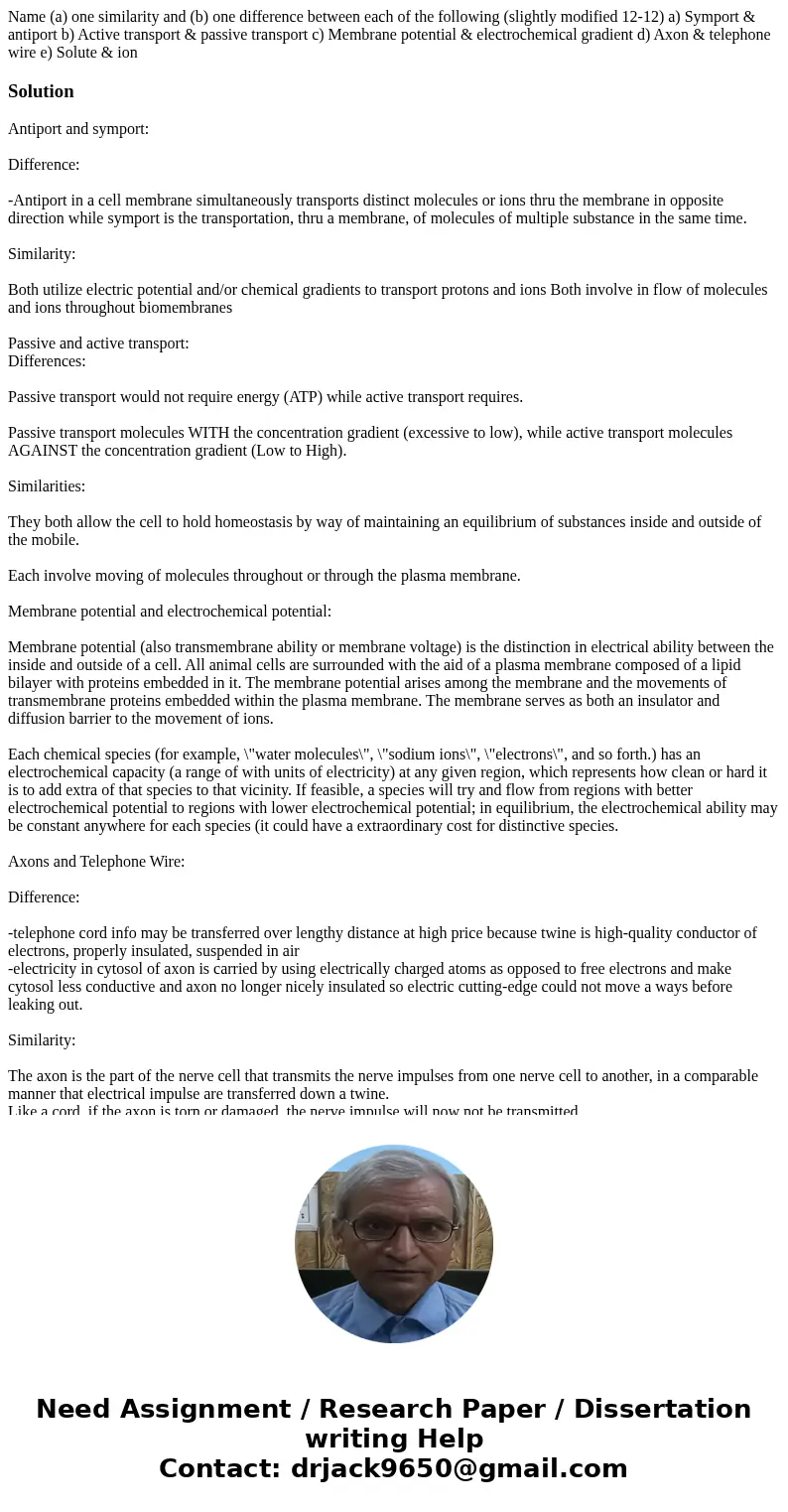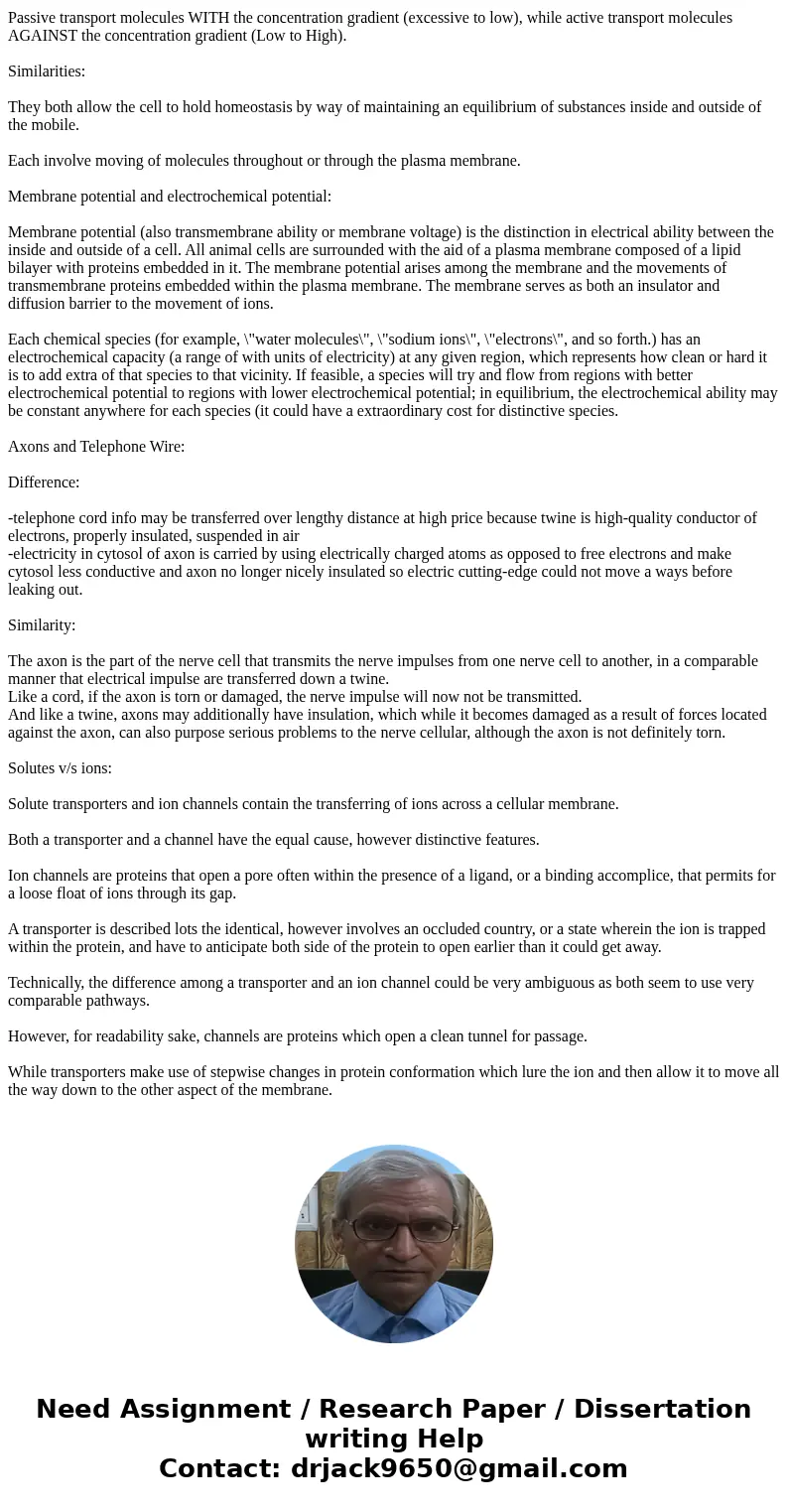Name a one similarity and b one difference between each of t
Solution
Antiport and symport:
Difference:
-Antiport in a cell membrane simultaneously transports distinct molecules or ions thru the membrane in opposite direction while symport is the transportation, thru a membrane, of molecules of multiple substance in the same time.
Similarity:
Both utilize electric potential and/or chemical gradients to transport protons and ions Both involve in flow of molecules and ions throughout biomembranes
Passive and active transport:
Differences:
Passive transport would not require energy (ATP) while active transport requires.
Passive transport molecules WITH the concentration gradient (excessive to low), while active transport molecules AGAINST the concentration gradient (Low to High).
Similarities:
They both allow the cell to hold homeostasis by way of maintaining an equilibrium of substances inside and outside of the mobile.
Each involve moving of molecules throughout or through the plasma membrane.
Membrane potential and electrochemical potential:
Membrane potential (also transmembrane ability or membrane voltage) is the distinction in electrical ability between the inside and outside of a cell. All animal cells are surrounded with the aid of a plasma membrane composed of a lipid bilayer with proteins embedded in it. The membrane potential arises among the membrane and the movements of transmembrane proteins embedded within the plasma membrane. The membrane serves as both an insulator and diffusion barrier to the movement of ions.
Each chemical species (for example, \"water molecules\", \"sodium ions\", \"electrons\", and so forth.) has an electrochemical capacity (a range of with units of electricity) at any given region, which represents how clean or hard it is to add extra of that species to that vicinity. If feasible, a species will try and flow from regions with better electrochemical potential to regions with lower electrochemical potential; in equilibrium, the electrochemical ability may be constant anywhere for each species (it could have a extraordinary cost for distinctive species.
Axons and Telephone Wire:
Difference:
-telephone cord info may be transferred over lengthy distance at high price because twine is high-quality conductor of electrons, properly insulated, suspended in air
-electricity in cytosol of axon is carried by using electrically charged atoms as opposed to free electrons and make cytosol less conductive and axon no longer nicely insulated so electric cutting-edge could not move a ways before leaking out.
Similarity:
The axon is the part of the nerve cell that transmits the nerve impulses from one nerve cell to another, in a comparable manner that electrical impulse are transferred down a twine.
Like a cord, if the axon is torn or damaged, the nerve impulse will now not be transmitted.
And like a twine, axons may additionally have insulation, which while it becomes damaged as a result of forces located against the axon, can also purpose serious problems to the nerve cellular, although the axon is not definitely torn.
Solutes v/s ions:
Solute transporters and ion channels contain the transferring of ions across a cellular membrane.
Both a transporter and a channel have the equal cause, however distinctive features.
Ion channels are proteins that open a pore often within the presence of a ligand, or a binding accomplice, that permits for a loose float of ions through its gap.
A transporter is described lots the identical, however involves an occluded country, or a state wherein the ion is trapped within the protein, and have to anticipate both side of the protein to open earlier than it could get away.
Technically, the difference among a transporter and an ion channel could be very ambiguous as both seem to use very comparable pathways.
However, for readability sake, channels are proteins which open a clean tunnel for passage.
While transporters make use of stepwise changes in protein conformation which lure the ion and then allow it to move all the way down to the other aspect of the membrane.


 Homework Sourse
Homework Sourse